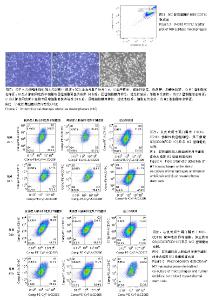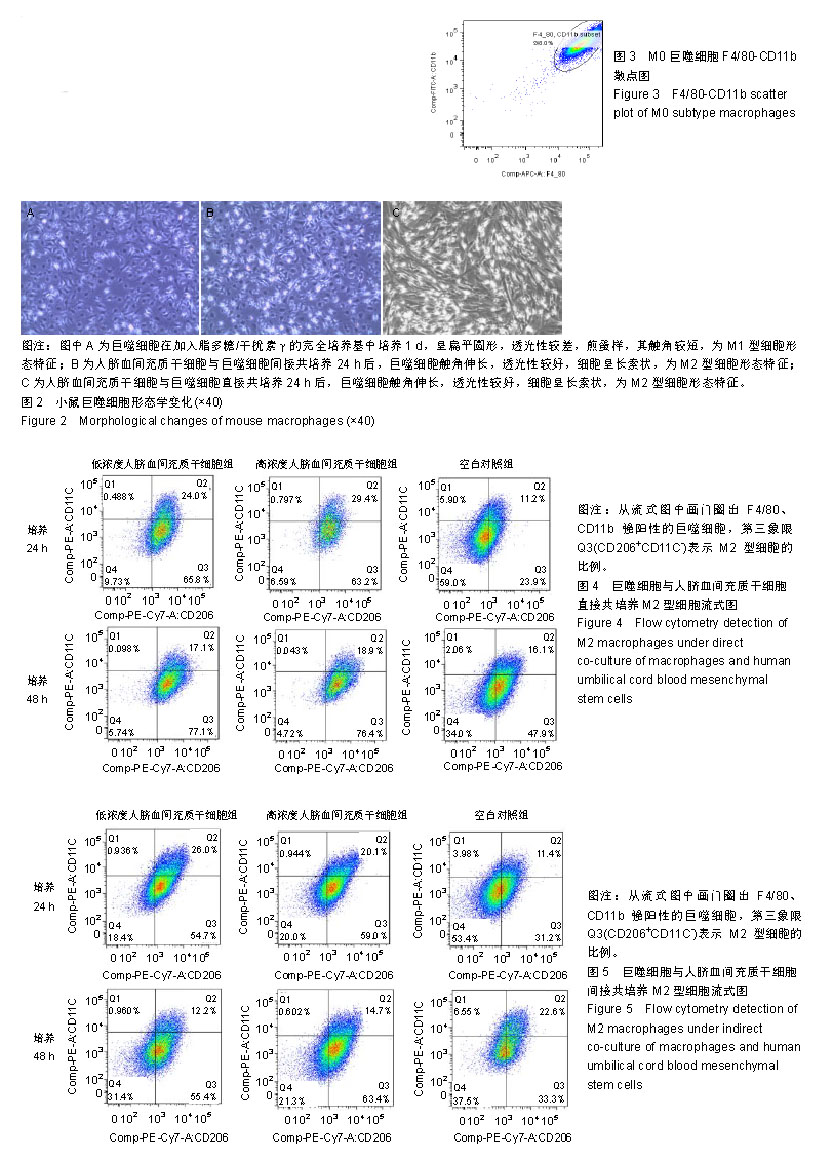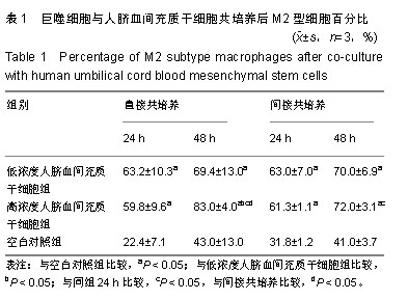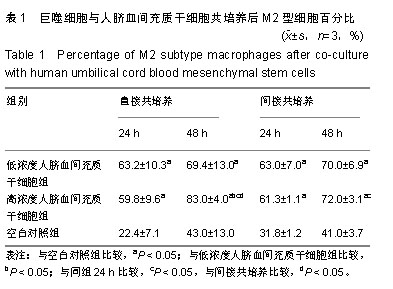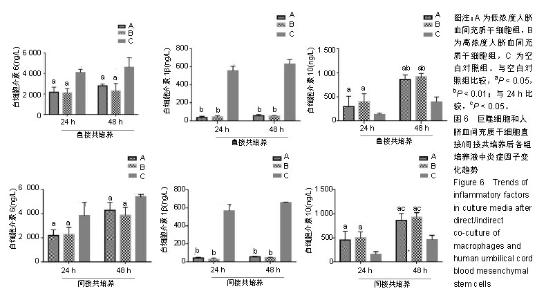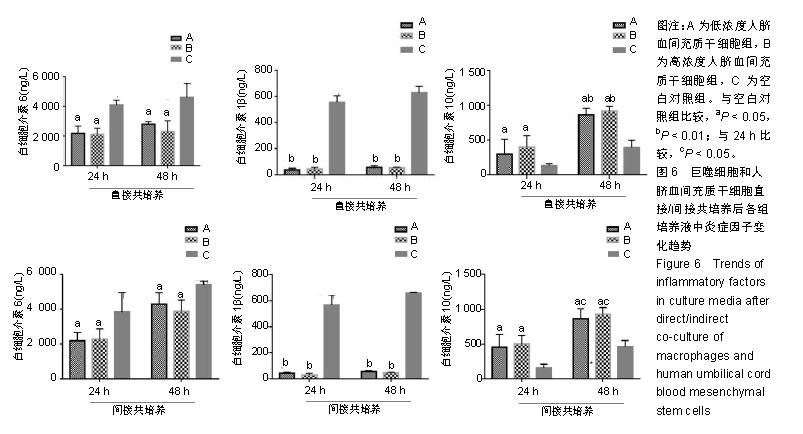| [1]Cho DI, Kim MR, Jeong HY, et al. Mesenchymal stem cells reciprocally regulate the M1/M2 balance in mouse bone marrow-derived macrophages. Exp Mol Med. 2014;46:e70.[2]Asami T, Ishii M, Namkoong H, et al. Anti-inflammatory roles of mesenchymal stromal cells during acute Streptococcus pneumoniae pulmonary infection in mice. Cytotherapy. 2018; 20(3):302-313.[3]Delewi R, van der Laan AM, Robbers LF, et al. Long term outcome after mononuclear bone marrow or peripheral blood cells infusion after myocardial infarction. Heart. 2015;101(5): 363-368.[4]Ben-Mordechai T, Holbova R, Landa-Rouben N, et al. Macrophage subpopulations are essential for infarct repair with and without stem cell therapy. J Am Coll Cardiol. 2013;62(20): 1890-1901.[5]Silva JD, Lopes-Pacheco M, Paz AHR, et al. Mesenchymal Stem Cells From Bone Marrow, Adipose Tissue, and Lung Tissue Differentially Mitigate Lung and Distal Organ Damage in Experimental Acute Respiratory Distress Syndrome. Crit Care Med. 2018;46(2):e132-e140.[6]Ti D, Hao H, Tong C, et al. LPS-preconditioned mesenchymal stromal cells modify macrophage polarization for resolution of chronic inflammation via exosome-shuttled let-7b. J Transl Med. 2015;13:308.[7]Li Y, Liu J, Liao G, et al. Early intervention with mesenchymal stem cells prevents nephropathy in diabetic rats by ameliorating the inflammatory microenvironment. Int J Mol Med. 2018;41(5):2629-2639.[8]Yu G, Borlongan CV, Stahl CE, et al. Transplantation of human umbilical cord blood cells for the repair of myocardial infarction. Med Sci Monit. 2008;14(10):RA163-172. [9]Weischenfeldt J, Porse B. Bone Marrow-Derived Macrophages (BMM): Isolation and Applications. CSH Protoc. 2008;2008:pdb. prot5080.[10]Brandenberger C, Kling KM, Vital M, et al. The Role of Pulmonary and Systemic Immunosenescence in Acute Lung Injury. Aging Dis. 2018; 9(4):553-565.[11]Kern S, Eichler H, Stoeve J, et al. Comparative analysis of mesenchymal stem cells from bone marrow, umbilical cord blood, or adipose tissue. Stem Cells. 2006;24(5):1294-1301.[12]Spaggiari GM, Moretta L. Cellular and molecular interactions of mesenchymal stem cells in innate immunity. Immunol Cell Biol. 2013; 91(1):27-31.[13]Abumaree MH, Al Jumah MA, Kalionis B, et al. Human placental mesenchymal stem cells (pMSCs) play a role as immune suppressive cells by shifting macrophage differentiation from inflammatory M1 to anti-inflammatory M2 macrophages. Stem Cell Rev. 2013;9(5):620-641.[14]Chazaud B. Macrophages: supportive cells for tissue repair and regeneration. Immunobiology. 2014;219(3):172-178.[15]Gordon S, Martinez FO. Alternative activation of macrophages: mechanism and functions. Immunity. 2010;32(5):593-604.[16]Swirski FK. Inflammation and repair in the ischaemic myocardium. Hamostaseologie. 2015;35(1):34-36.[17]Eirin A, Zhu XY, Jonnada S, et al. Mesenchymal Stem Cell-Derived Extracellular Vesicles Improve the Renal Microvasculature in Metabolic Renovascular Disease in Swine. Cell Transplant. 2018;27(7):1080-1095.[18]Lavinia PD, Escalante P, García NC, et al. Continental-scale analysis reveals deep diversification within the polytypic Red-crowned Ant Tanager (Habia rubica, Cardinalidae). Mol Phylogenet Evol. 2015;89: 182-193.[19]Song Y, Dou H, Li X, et al. Exosomal miR-146a Contributes to the Enhanced Therapeutic Efficacy of Interleukin-1β-Primed Mesenchymal Stem Cells Against Sepsis. Stem Cells. 2017;35(5):1208-1221.[20]Jung M, Ma Y, Iyer RP, et al. IL-10 improves cardiac remodeling after myocardial infarction by stimulating M2 macrophage polarization and fibroblast activation. Basic Res Cardiol. 2017;112(3):33.[21]Holladay CA, Duffy AM, Chen X, et al. Recovery of cardiac function mediated by MSC and interleukin-10 plasmid functionalised scaffold. Biomaterials. 2012;33(5):1303-1314.[22]Lee S, Zhang QZ, Karabucak B, et al. DPSCs from Inflamed Pulp Modulate Macrophage Function via the TNF-α/IDO Axis. J Dent Res. 2016;95(11):1274-1281.[23]Liu W, Zhang S, Gu S, et al. Mesenchymal stem cells recruit macrophages to alleviate experimental colitis through TGFβ1. Cell Physiol Biochem. 2015;35(3):858-865. |
